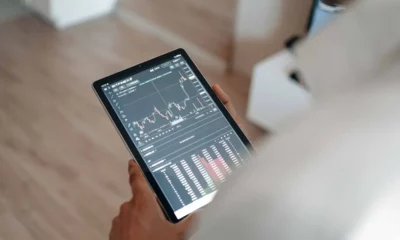Sponsored
Wearing a smartwatch to work out smarter: Use cases that prove usability
Discover how smartwatches are revolutionizing fitness and sports. From surfing to cycling, they offer real-time updates, GPS tracking, and more.

Just a heads up, if you buy something through our links, we may get a small share of the sale. It’s one of the ways we keep the lights on here. Click here for more.
In fitness and sports, we have seen how technology has completely changed the way it functions. Some adaptive tools and gadgets can monitor many aspects of the sport and provide metrics of our health as well.
One gadget that has helped many fitness enthusiasts work out smartly is the smartwatch. In fact, over 13% of Americans use a smartwatch for fitness purposes.
This simple, wrist-based piece of technology provides more than just the time but also many other features such as heartbeat, distance run, and more.
In this blog, we will examine some use cases that prove the usability of smartwatches for working out smarter.
Watersports Like Surfing around
Many adventure seekers who love waves enjoy surfing, but it also comes with challenges. There is a podcast with surfer Alana Blanchard, a professional athlete.
From her stories, we learn how difficult and challenging this sport is. She goes on to say that the unpredictable ocean conditions and the waves’ timing are important for mastering this sport. That’s where smartwatches can help.
Modern smartwatches can help surfers get real-time updates on tide levels, wave height, and water temperature. Features like GPS tracking allow users to record their surfing routes and analyze performance.

These technical functionalities complement Alana’s message of overcoming the ocean’s harsh conditions and unpredictable nature.
Some advanced smartwatch models even have barometric altimeters, which measure atmospheric pressure to help predict sudden weather changes.
Take the depth-tracking feature, for example. This feature allows a smartwatch to help surfers analyze how deep they can dive while wiping out.
This offers insights into safety and performance improvement, which is especially important when surfing in spots like Hawaii’s North Shore or Australia’s Gold Coast.
Running: Tracking Beyond Miles
Many people who run know the inconveniences behind it. Without proper technology, runners couldn’t track any real metrics of their performance or form.
With the help of the best smartwatches, running has transformed from a mere sport into a science. These devices do more than just track the total distance—they can even analyze stride length, cadence, and foot strike patterns.
This detailed information and insights can help runners improve their efficiency and reduce the risk of injuries.
For example, a marathon runner could use smartwatch data to look into their vO2 max levels and adjust their training intensity accordingly.
Heart rate variability tracking ensures patients are not training heavily, while GPS tracking ensures they can explore new routes.
There are also real-time pace alerts that signal runners to maintain a steady pace, which can improve their rhythm while running.
Let’s also not forget about recovery. Many smartwatches offer post-recovery tips based on previous running data and training intensity to ensure that runners get the rest they need before the next run.
Cycling: More Than Just Pedal Power
Cycling is another sport in which smartwatches are increasingly used. Cyclists can monitor their power output to understand how much of their power they are exerting.
They can combine this data with cadence tracking to help riders find their optimal pedaling rhythm. The barometric altimeters mentioned above can also help cyclists examine atmospheric pressure, elevation gain, and gradient percentage if they want to explore hilly terrain.

Since cycling is a sport that is commonly associated with injuries and accidents, smartwatches come with features that can help or even prevent these situations.
Features like crash detection and emergency SOS are lifesaving tools for those who ride in high-accident areas.
These smartwatches can also easily be used with apps like Strava so that cyclists can analyze their rides and even compete with others virtually.
Hiking: Navigating Trails Smarter
Hiking seems like a straightforward activity that doesn’t require many gadgets, but smartwatches can surely help.
Features such as GPS tracking, altimeters, and solar charging can help hikers explore different terrains, even during changing weather.
For hiking, the breadcrumb trail mapping feature can allow hikers to look back at their steps and retrace them to ensure they are not lost and are on the right path.
Also, many advanced smartwatches come with weather alerts that signal hikers about incoming weather changes.
These use cases prove that smartwatches can help with the uncertainties and challenges associated with sports. Their features can help the user work out smartly, which is needed in this evolving world of technology.
Have any thoughts on this? Drop us a line below in the comments, or carry the discussion to our Twitter or Facebook.
Editors’ Recommendations:
Disclosure: This is a sponsored post. However, our opinions, reviews, and other editorial content are not influenced by the sponsorship and remain objective.

































